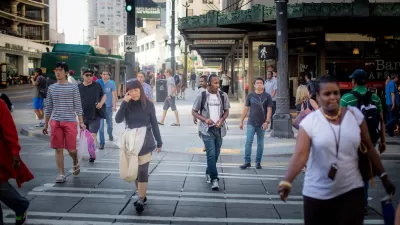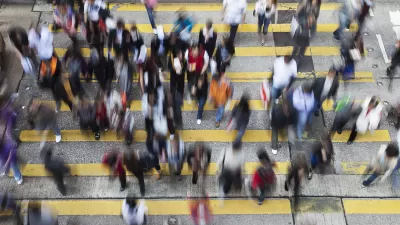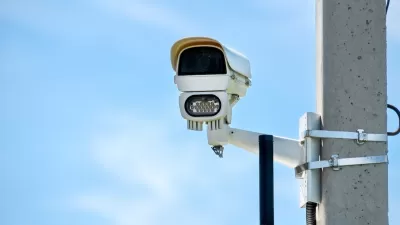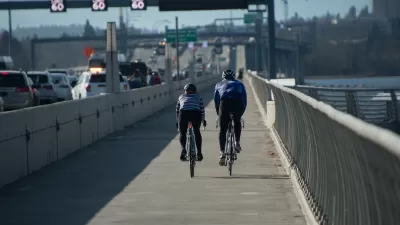Seattle is working toward its Vision Zero goals, after a year in which most people killed by drivers in the city were pedestrians.

"The number of traffic fatalities and serious injuries in Seattle dipped only slightly last year from the previous year, leaving the city far from meeting its goal of eliminating all such deaths and injuries by 2030," reports Michelle Baruchman.
"Preliminary data from the Seattle Department of Transportation (SDOT) show 14 people died on city streets in 2018, down from 19 in 2017. An additional 170 people were seriously injured," adds Baruchman. "Most of last year’s traffic deaths — eight — were pedestrians, four were in vehicles, one was bicycling and one was on a motorcycle."
While any news of traffic facilities is disheartening, the city's work to reduce fatalities is making progress. Fatalities are down significantly from 2006, when the city reported 33. The city is also safer than other large cities in the country, according to the Dangerous By Design report from Smart Growth America and the National Complete Streets Coalition [pdf]. The news also offers an occasion for the city to discuss future projects that will further improve traffic safety, like plans to implement signals that give pedestrians a three- to seven-second head start at intersections. "The system, called leading pedestrian intervals, makes pedestrians in the crosswalk more visible to drivers making turns," explains Baruchman. "SDOT has equipped 43 intersections with the new systems, and has applied for grants to evaluate 140 more locations."
FULL STORY: Seattle traffic deaths and injuries down slightly last year; most of the fatalities were pedestrians

Planetizen Federal Action Tracker
A weekly monitor of how Trump’s orders and actions are impacting planners and planning in America.

San Francisco's School District Spent $105M To Build Affordable Housing for Teachers — And That's Just the Beginning
SFUSD joins a growing list of school districts using their land holdings to address housing affordability challenges faced by their own employees.

The Tiny, Adorable $7,000 Car Turning Japan Onto EVs
The single seat Mibot charges from a regular plug as quickly as an iPad, and is about half the price of an average EV.

Trump Approves Futuristic Automated Texas-Mexico Cargo Corridor
The project could remove tens of thousands of commercial trucks from roadways.

Austin's First Single Stair Apartment Building is Officially Underway
Eliminating the requirement for two staircases in multi-story residential buildings lets developers use smaller lots and more flexible designs to create denser housing.

Atlanta Bus System Redesign Will Nearly Triple Access
MARTA's Next Gen Bus Network will retool over 100 bus routes, expand frequent service.
Urban Design for Planners 1: Software Tools
This six-course series explores essential urban design concepts using open source software and equips planners with the tools they need to participate fully in the urban design process.
Planning for Universal Design
Learn the tools for implementing Universal Design in planning regulations.
Smith Gee Studio
City of Charlotte
City of Camden Redevelopment Agency
City of Astoria
Transportation Research & Education Center (TREC) at Portland State University
US High Speed Rail Association
City of Camden Redevelopment Agency
Municipality of Princeton (NJ)





























